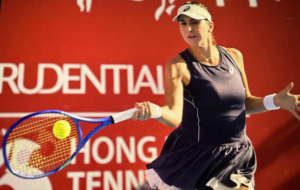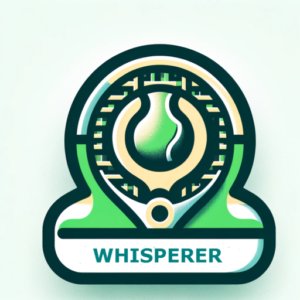From Watching to Feeling: The Key to Better Ball Watching
From Watching to Feeling: The Key to Better Ball Watching
Most players are told to “watch the ball,” but high-level tennis demands more. Elite players do something different — they watch with their whole body, not just their eyes.
Watching the ball is a foundation. Watching with your ears is a step up. But feeling the ball strike is the ultimate goal.
This transition — from watching to feeling — is what separates solid players from those who time the ball effortlessly, even under pressure.
Why Traditional Watching Falls Short
Just before contact, most players’ eyes shift — not toward the ball, but toward the result. They glance up, anticipating where the shot will go or how the opponent might respond. This subtle habit, we often referred to as “Hollywood,” is where attention drifts from process to outcome. In that split-second, the connection to the ball is broken. The eyes move too soon, the head lifts, and timing unravels. This often results in mishits, rushed or off-balance swings, and an overall loss of control — all because the mind has jumped ahead instead of staying grounded in the present moment of strike.

Example of Poor Ball Watching: Bencic
Elite players stay anchored by tuning into the moment of contact — not just with their eyes, but with their entire sensory system: vision, to track the ball’s exact entry into the strike zone; hearing, to register the subtle sound of clean contact; and touch, to feel the pressure, tension, and release through the strings and into the hand. This multi-sensory awareness creates a grounded, instinctive response that allows them to strike with precision even under stress. They’re not guessing where the ball is — they’re experiencing it in real time.
Revisit: Watch with Your Ears
In case you missed it, be sure to read our post on Watch with Your Ears — a powerful concept that teaches players to sharpen their auditory perception during rallies. By training your ear to recognize the distinct sound of clean contact, you begin to anchor your timing and rhythm in something more reliable than just sight. This allows you to stay in flow even when vision is compromised by speed, spin, or pressure.
Now, we take it a step further. Feeling the strike is about integrating all your senses — the visual stillness of your eyes, the subtle auditory feedback from the strings, and the physical sensation of compression and release through the hand and forearm. This complete sensory immersion gives you true control over the ball. You’re no longer reacting — you’re connected.
How to Improve Ball Watching Through Feel
Use these simple drills to elevate your strike awareness:
-
Soft Rally “Now” Drill
Rally at 50% pace. Say “now” at the exact moment of contact. This builds precision in your timing and focuses your awareness on the strike point. -
Eyes Still Challenge
Record your hitting sessions. Can you keep your head and eyes quiet through contact? Federer does this to perfection. Quiet eyes = clean strikes.
Why Feeling the Strike Works
Watch with Intention
Before hitting, take a moment to visualize the feel of clean contact — not just the result, but the sensation of the ball compressing into your strings, the sound it makes, and the rhythm of your swing. See it in your mind’s eye as if it’s already happened. Breathe slowly and deliberately to center your nervous system. This primes your body for calm, controlled execution and prevents your mind from racing ahead. Pair this visualization with simple pre-point routines — like bouncing the ball the same number of times or using a keyword like “smooth” — to lock in your focus and anchor your attention during high-pressure moments.
Wrap: Elevate Your Ball Watching
Most players stop at watching. Some start to listen. But the best learn to feel.
From watching to feeling — that’s the shift that refines your contact, steadies your mind, and transforms how you play the ball.
Train the feel. Transcend old habits. Watch the ball with sharper awareness than ever before.






